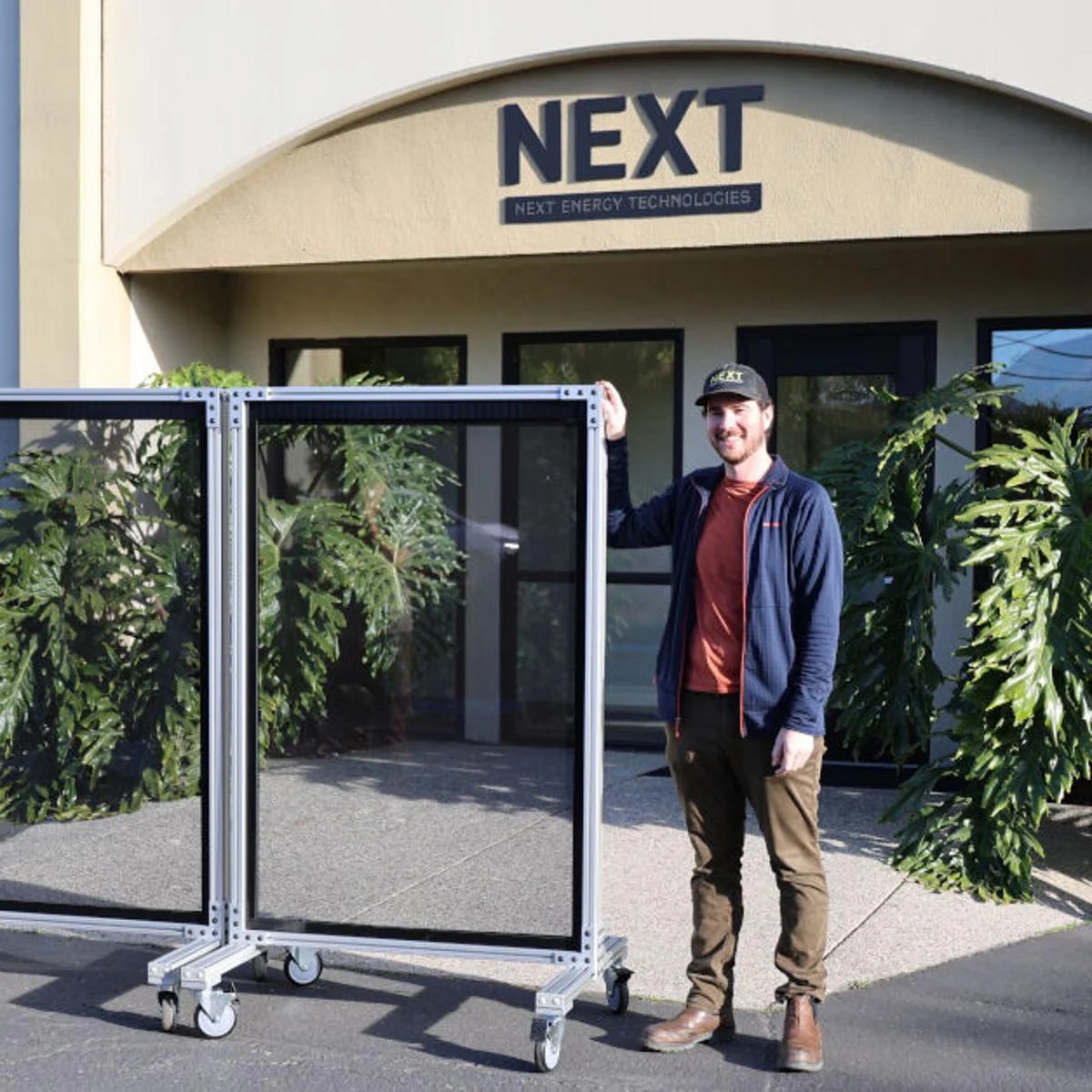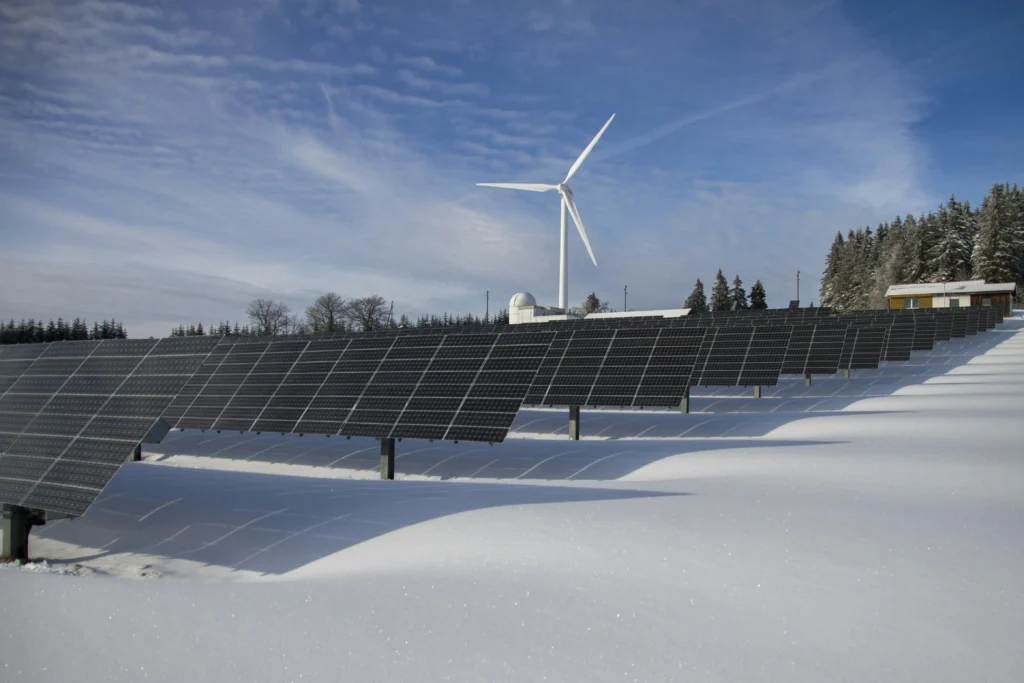
NEXT Energy Unveils World’s Largest Transparent Solar Window
NEXT Energy Technologies has taken a groundbreaking step in the field of organic photovoltaic (OPV) technology by upgrading its pilot production line to manufacture the world’s largest fully transparent power-generating windows. The newly developed 40” x 60” laminated transparent OPV windows demonstrate the scalability of NEXT’s cutting-edge technology, utilizing advanced automated slot-die coating techniques.
This significant milestone paves the way for the glass industry to integrate full-scale vision-area glass into commercial buildings, transforming facades into clean energy-generating surfaces. By addressing key industry challenges related to aesthetics, performance, and manufacturability, NEXT’s OPV technology is positioned as a revolutionary solution in sustainable building design.
The Future of Transparent Solar Windows
NEXT OPV coatings are designed to seamlessly blend with modern commercial architecture. The neutral grey tint of the coating mimics the most widely adopted color in North American commercial facades, ensuring that the windows maintain an appealing aesthetic while generating solar power. Unlike traditional solar panels, which often compromise a building’s visual appeal, NEXT’s transparent OPV windows enhance both design and functionality.
“The combination of the highest quality aesthetics, power generation, and seamless integration with the glass supply chain is a game changer in the push towards designing Net Zero buildings,” said Andy Cohen, Co-Chairman of Gensler. “Just mid-last year, we were demonstrating NEXT’s 27” x 35” OPV windows at our office in LA, and now, with this larger window format, we have sustainable building projects in our sights.”
The transition to larger OPV window formats marks a critical step toward commercial adoption. As cities and industries strive for Net Zero buildings, the ability to incorporate energy-producing glass into large-scale construction projects is a major advancement.
Bridging the Gap Between Innovation and Commercialization
NEXT is actively preparing for demonstration installations with key partners across the U.S. and Europe. These projects will highlight the practical application of transparent OPV technology in real-world settings, proving the feasibility of integrating solar power into building facades.
With the industry’s increasing focus on sustainability, NEXT is also working toward obtaining UL safety and performance certification for grid-connected projects. Certification is a key requirement for widespread adoption, ensuring that OPV technology meets the stringent safety and efficiency standards required for commercial and residential buildings.

“This milestone is further evidence to an industry hungry for a solution that our combination of OPV coatings and advanced manufacturing processes is working, scaling, and can be rapidly deployed,” said Daniel Emmett, Co-Founder, Executive Chairman, and CEO of NEXT. “It’s a proof point that builds high confidence in our path to enabling 60” x 120” commercial production.”
Transforming Buildings into Renewable Energy Sources
NEXT’s proprietary OPV coatings turn conventional commercial windows into clean energy generators, making buildings more sustainable while reducing reliance on the electrical grid. By absorbing and converting infrared light into electricity, these windows help reduce a building’s overall energy consumption, alleviating strain on HVAC systems and lowering operational costs.
A commercial building outfitted with NEXT OPV windows can generate enough onsite renewable power to offset 20% to 25% of its total energy load. This level of energy generation contributes significantly to sustainability efforts, reducing carbon footprints and supporting green building certifications such as LEED (Leadership in Energy and Environmental Design).
Unlike conventional solar panels, which require additional roof or ground space, NEXT OPV windows utilize existing building surfaces, making them a practical choice for urban environments where space is limited. This integration provides a dual benefit—energy production and enhanced insulation—helping to optimize energy efficiency without compromising architectural integrity.
A Scalable and Cost-Effective Solution
One of the primary advantages of NEXT’s OPV technology is its scalability. Traditional solar panel manufacturing involves costly materials and complex assembly processes, whereas NEXT’s solution relies on organic semiconducting materials that are earth-abundant and low-cost. These materials are processed using a high-speed, low-energy, and scalable slot-die coating method, making the manufacturing process more efficient and cost-effective.
The ability to scale production while maintaining affordability is a crucial factor in driving widespread adoption. As NEXT advances toward full-scale production, the company aims to offer an economically viable alternative to traditional energy sources, empowering architects, developers, and building owners to integrate renewable energy solutions without incurring excessive costs.
A Step Toward a Sustainable Future
NEXT Energy Technologies, based in Santa Barbara, California, is at the forefront of innovation in the clean energy and building industries. Its proprietary OPV technology, developed through Nobel Prize-winning research at UC Santa Barbara, has received funding from the California Energy Commission, underscoring its potential impact on the renewable energy market.
NEXT’s vision extends beyond individual projects; the company aims to drive a paradigm shift in how buildings generate and consume energy. By enabling glass manufacturers to seamlessly incorporate OPV coatings into their products, NEXT is laying the groundwork for a future where commercial and residential buildings actively contribute to clean energy generation.
As climate change concerns drive global efforts toward sustainability, solutions like NEXT OPV windows offer a practical and impactful way to reduce carbon emissions while maintaining high design standards. With increasing regulatory support for green building initiatives, NEXT’s technology aligns perfectly with industry trends and sustainability goals.




